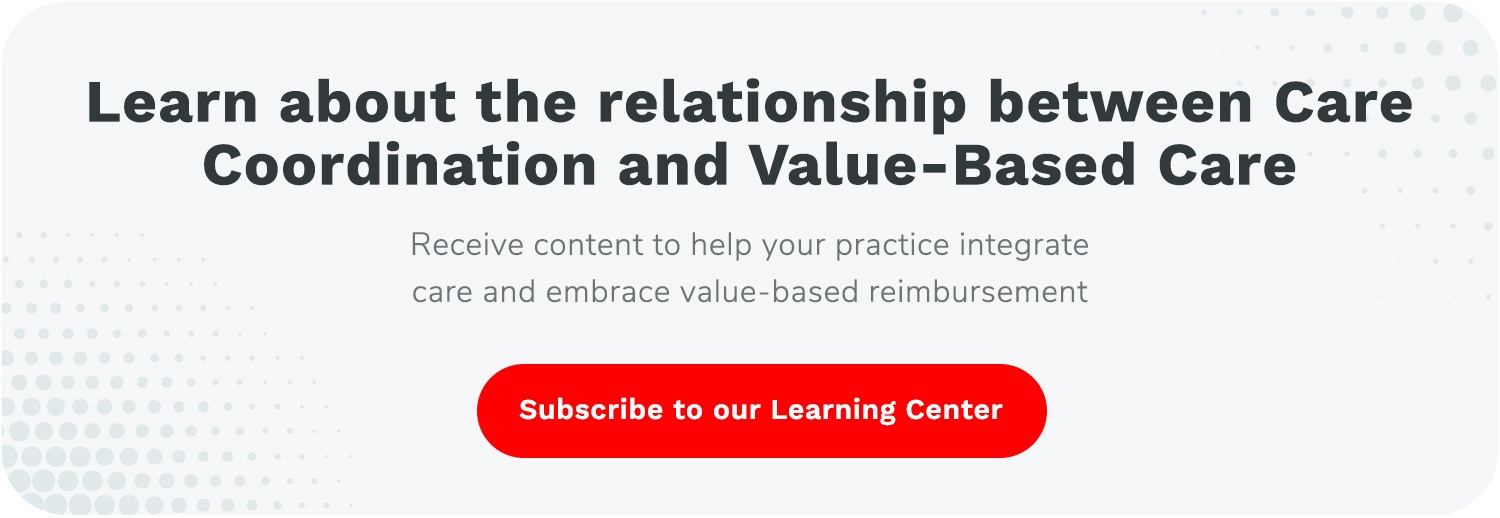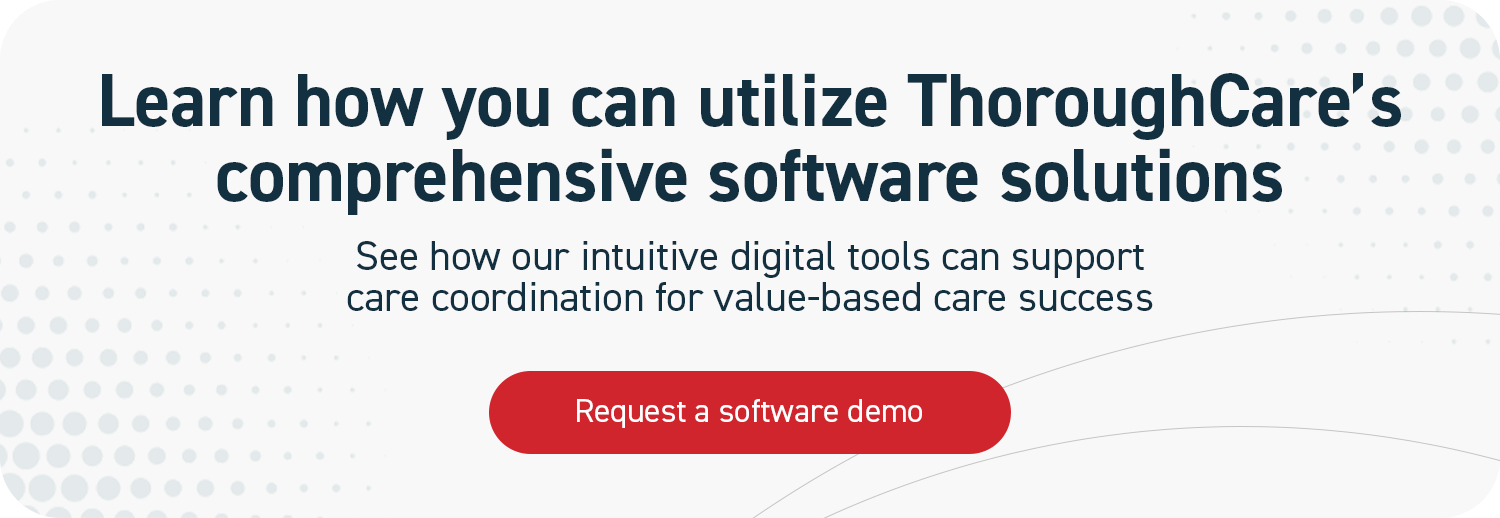Healthcare Analytics | Data Integration & Interoperability
Healthcare Data Integration & Interoperability: Why They Matter
Healthcare data integration and interoperability are ever-increasingly popular buzzwords within the healthcare ecosystem, but how do they affect your practice and your patients’ care? Why do they matter and what do they even mean in practical measures?
What are Data Integration and Interoperability?
Simply stated, integration translates data across systems and interoperability is the ability for those systems to speak to each other. This connection of data between systems and devices can be crucial to achieving a holistic patient view of their care journey.
For example, interoperability can be achieved when a primary care physician's (PCP) electronic health record (EHR) integrates with a hospital's IT system. Should their patient be admitted, the PCP will have a more complete patient record post-discharge, for actionable follow-up.
This flow of data can be supported in a few different ways. These include:
- Clinical data being exchanged through integration services
- A member of a care team directly accessing one software system through another
- Systems notifying each other upon specific actions or events
Data integration enables interoperability, supporting the aim of connecting systems and sharing information.
Integration and interoperability can achieve:
- Comprehensive patient data pulled from disparate sources
- Availability of the entire patient care journey available for actionable analysis
- Holistic continuum of care via focused value-based care delivery
Data integration leverages other technology to translate the information sent between providers while interoperability ensures the platforms speak the same language. By integrating data freed from silos and across providers and networks, data accuracy, facilitating data-driven decisions, and recognizing a patient’s entire care journey are improved.
Over 35% of Medicare beneficiaries see five or more physicians annually. If you happen to be one of those five physicians, would you not want a complete record of your patient’s services, care, and medical data? Holistic, patient-centered healthcare cannot happen in a bubble. Integration and interoperability are needed to inform these actionable decisions.
The US spends approximately $4 trillion annually on healthcare, which is the highest in the world and nearly twice as high as the next succeeding country’s healthcare spending. Additionally, life expectancy in the US has dropped by two years since 2019.
We are spending more and declining quicker.
The answer lies in reducing inefficiencies across the triple aim of care: cost, health outcomes, and experience. According to a November 2022 white paper from HFS Research, Digital Transformation and Interoperability are Critical to Health Plan Well-Being: “Interoperability is key to digitally connecting the healthcare ecosystem to deliver optimal triple-aim outcomes.”
Additionally, it was reported that 15%, or approximately $600 billion, of US healthcare spending is attributed to fraud, waste, and abuse with a large part of that stemming from not being able to share data seamlessly between stakeholders, impacting consumer health and wellness due to a lack of interoperability.
2023 State of Healthcare Data Interoperability
Health Gorilla, an interoperability software platform, released an extensive report in January, entitled the 2023 State of Interoperability. Its contents show that the conversation around data exchange is ever-increasing in volume and value.
Containing comprehensive insights from more than 130 executive decision-makers across the healthcare sector, it was ascertained that data quality and data sharing remain a challenge.
Statistics from the report further solidify the need for comprehensive integration and interoperability:
- 60% of health systems receive duplicate, incomplete, and junk data
- 69% of health organizations receive incomplete data
- 69% of digital health executives receive incomplete data
- 32% of diagnostic labs do not contribute at all to a health information exchange (HIE); when they do, 76% participate only regionally
- 40% of surveyed EHR vendors are aware of a potential need to join a Qualified Health Information Network (QHIN) but are not prioritizing this action
Concerns regarding patient privacy, data security, and difficulties implementing technology change measures are leading reasons why integration and interoperability are not entirely embraced. To that end, data needs to be shared effectively with a thoughtful approach to securing that health data information.
Health Gorilla determined three priorities:
- Help providers get data faster: Data from HIEs are used for a variety of purposes and 83% of health systems use data to support patient care.
- Maintain a competitive advantage: By participating in HIEs, health systems can maintain a competitive advantage in their markets, build data-sharing alliances with other provider organizations, and retain providers by reducing their administrative burden.
- Reduce costs and increase reimbursement: Through participating in HIEs, health systems can reduce costs associated with medical record retrievals and prepare for future CMS incentives that may reward data exchange.
These integration and interoperability measures are being embraced by health system Chief Information Officers (CIOs). In 2023, 55% of health system CIOs anticipate spending from 5 to 20% more on interoperability measures compared to 2022. Additionally, every CIO respondent surveyed indicated they have spent more on interoperability in increasing values each year. In other words, they continue to invest in interoperability because of the inherent value across organizations, for providers, and for patients.
So, why are integration and interoperability so challenging?
Barriers to Data Integration and Interoperability
The Johns Hopkins School of Medicine reports approximately 40,000 to 80,000 deaths occur each year in US hospitals due to misdiagnosis. Not to mention that an estimated 12 million Americans suffer from a yearly diagnostic error within their primary care setting. Integration and interoperability are seemingly a critical differential, not just for correct diagnoses and treatment plans, but for a more informed and holistic patient-centric model of care.
Although there has been progress made in sharing and pulling data between healthcare organizations, obstacles remain. Loyd Bittle, CEO and Founder at Innovar Healthcare, points out multiple reasons why integration and interoperability can currently seem daunting:
- Organizations need to not just share, but effectively share data across and within systems
- A thoughtful approach is required to safely secure healthcare data information at rest, in transit, and while being received
- Integration staff can be difficult to find and train
- An inherent learning curve for onsite staff to scale integration methods to and from numerous data receivers, platforms, and/or systems
- Concerns whether an organization’s current technology can scale to the size of the problem
The challenges of high-quality data integration and interoperability can be loosely segmented into effectiveness, security, staffing, reliability, and scalability. An organization and/or provider needs effective and secure data that is utilized properly and without gaps.
Regulations for Data Integration and Interoperability
The US federal government and Centers for Medicare & Medicaid Services (CMS) have enacted rules and mandates to prioritize interoperability and secure information exchange.
The 21st Century Cures Act became public law in 2016 and mandates that the Department of Health and Human Services:
- Encourages partnerships between HIEs and others to offer patients access to their electronic health information
- Educates providers on health information exchanges
- Issue guidance to HIEs on best practices
- Promotes policies to facilitate patient communication with providers
Born of the 21st Century Cures Act is TEFCA, which outlines a policy and technical approach to enable a nationwide exchange of electronic health information across disparate sources. This network is designed to provide a single on-ramp to nationwide connectivity. Although currently voluntary to join, the Common Agreement is a legal agreement, once joined, that enables health and data information sharing.
CMS released its Interoperability and Patient Access final rule on May 1, 2020. This final rule details methods for patients to receive access to their health information, but also moves toward greater interoperability across the healthcare ecosystem. It emphasizes the need to improve HIE to achieve necessary access to complete health records for patients, health care providers, and payers. This rule also enables several Application Programming Interfaces (APIs), such as the Patient Access API, Provider Directory API, and payer-to-payer data exchange of certain patient clinical data, admission, discharge, and transfer events, with enforcement against information blocking.
Building upon the Interoperability and Patient Access final rule, CMS created the Interoperability and Prior Authorization rule to improve the electronic exchange of healthcare data and streamline processes related to prior authorization. Qualified health plans are expected to report on the utilization of the Patient Access API to understand the impact on consumers.
Pertinent institutions and governing bodies are pushing for greater information exchange to better inform patient care and for providers to have the full scope of a patient’s medical history.
Rohan Kulkarni, HFS researcher, urges stakeholders not to wait for mandates to catch up to individual practices: “You must think of interoperability as a business imperative instead of a compliance check box. Interoperability will drive differentiation in a health plan’s product portfolio, improve its relationship with providers and health consumers, and improve financial performance.”
Benefits of Data Integration and Interoperability
With an enormous array of benefits to offer, both integration and interoperability should not be seen as obstacles to overcome but as trail markers pointing to best practices.
Integration and interoperability can:
- Pull patient health data from a multitude of sources
- Enable a holistic patient view
- Better inform actionable decisions
- Support multiple providers with a “panoramic view” of a patient’s care
- Streamline care across applications, CMS programs, and quality measures
- Strengthen value-based care delivery
- Improve efficiency, quality, and overarching care delivery
- Breakdown barriers of insufficient data
- Reduce insufficiencies in patient data
- Help providers access data quicker, potentially resulting in more comprehensive care and reducing both provider and patient wait times
- Assist providers and health systems to maintain a competitive advantage
- Reduce administrative burdens, which can reduce costs and staff burnout
- Decrease or eliminate costs associated with retrieving records
- Close workflow and care gaps
Utilizing securely shared patient data also enhances the ability to address social determinants of health (SDOH). Accessing complete health data beyond the known basics implies a greater breadth of information to evaluate and treat patients.
Providing comprehensive services to a patient requires a broad vantage point. Integration and interoperability act as lenses to garner the full view.
“The reality is that interoperability and integration in healthcare has gotten so much better that the demand for it is much greater, which provides its own challenges. Plus, being able to do it effectively has become essential for an organization to care for patients effectively and run their business properly. Choosing the right partner for integration and interoperability will be an important driver of your organization’s success.” – Loyd Bittle, CEO and Founder of Innovar Healthcare
ThoroughCare Supports Integration and Interoperability
ThoroughCare’s shared technology platform enables integration with electronic health records, health information exchanges, remote monitoring devices, and advance care directives, supporting an inclusive view of patient data.
Data analytics reveal patient health trends and outcomes, facilitating more accurate risk assessment, cost management, and the promotion of evidence-based care practices.




